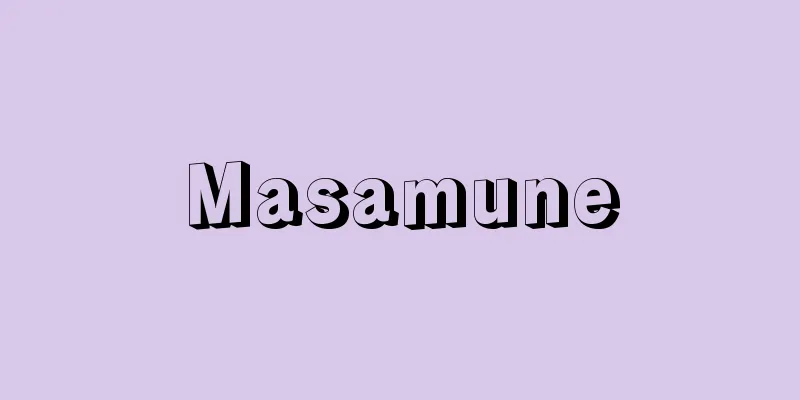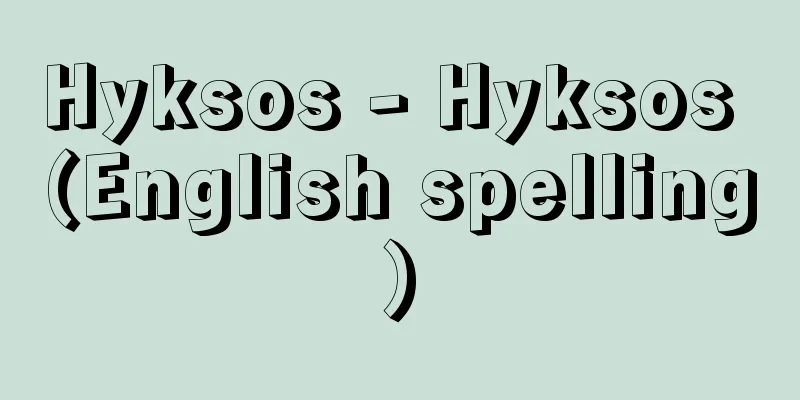Masamune

|
Dates of birth and death unknown. A swordsmith from the late Kamakura period, he is a master of Japanese swords made in Kamakura, Sagami Province (Kanagawa Prefecture). He is said to have studied under Shintogo Kunimitsu, who is considered the father of Kamakura blacksmithing, and was adopted by his fellow student, Yukimitsu. He moved from his master's style of straight-edged blades with nie-deki (boiled finish) to Yukimitsu's style of slightly disordered blades that emphasized the boiling, and perfected the so-called Soshu-den style, which maximizes the beauty of the changes in blade pattern caused by boiling on the beautiful forged surface of the jigane (jigane). Masamune's name is recorded as "Goro Nyudo" in the oldest sword book "Kanchiin Bonmei Zukushi" and in the family tree it is Shintogo Kunimitsu, but modern sword books such as "Kokin Mei Zukushi" link the three people as "Kunimitsu - Yukimitsu - Masamune". In other words, it is written that "Okazaki Goro Nyudo Yukimitsu's son At the age of 17, he separated from his father Yukimitsu in Koan and became a disciple of Shintogo Kunimitsu At the age of 25 around Shoo At the age of 71 around Kenmu, he was born in Bun'ei 1 and died in Ko'ei At the age of 81, he traveled to various provinces before Kenmu, traveled again in 75, and returned at the age of 77." This was written in the late Edo period and is not very reliable, but it is believed that such a biography of Masamune was completed in the Edo period. It is rare to find a Masamune sword with a signature, and apart from a few famous swords such as "Kyogoku Masamune" and "Fudo Masamune", many swords are unsigned, and many were later perfected by the Honami family and inlaid with gold inscriptions. Among the representative swords still in existence are famous swords such as "Kanze Masamune", "Nakatsukasa Masamune", "Kuki Masamune", "Hyuga Masamune", and "Hocho Masamune", all of which are designated as national treasures, but since most of them are unsigned, in the Meiji period, a "Masamune erasure theory" emerged, claiming that Masamune never existed. However, in addition to the aforementioned "Kanchiin Honmei-zukushi", there are already descriptions of Masamune in the Middle Ages, and in addition to sword books, "Sekiso Orai" (completed in the mid-Muromachi period) states that he was "a master of swordsmanship" and praised as a master, so the theory that he did not exist is not valid. Masamune's son or adopted son, Hikoshirō Sadamune, and Hiromitsu and Akihiro, who were said to be descendants of Masamune and Shinshu, were active in Sagami during the Nanboku-chō period, and in the Edo period, they were likened to the Ten Philosophers of Confucius and were known as the "Ten Philosophers of Masamune." The names of the ten vary slightly depending on the sword book, but they include Go Yoshihiro, Kaneshige, Hasebe Kunishige, Kanemitsu, Nagayoshi, Norishige, Samoji, Kaneuji, Moritaka, and Rai Kunimitsu. This is thought to have been created later, but it is true that after the appearance of Masamune, the style of ukideki influenced swordsmiths all over the country. [Nobuo Ogasawara] [Reference item] |Manuscript published in 1423 (Oei 30), designated as an important cultural property by the national government, held at the National Diet Library . "Meijin" ("Kanchiin Honmeijin") Source: Shogakukan Encyclopedia Nipponica About Encyclopedia Nipponica Information | Legend |
|
生没年未詳。鎌倉末期の刀工で、相模(さがみ)国(神奈川県)鎌倉の地で作刀した日本刀を代表する名匠。鎌倉鍛冶(かじ)の祖とされる新藤五国光(しんとうごくにみつ)を師とし、同門の行光(ゆきみつ)の養子となったと伝えられる。師の沸出来(にえでき)の直刃(すぐは)の作風から、行光のやや乱れて沸を強調した作風を経て、地鉄(じがね)の美しい鍛(きた)え肌に沸による刃文の変化の美を最大限に表現した、いわゆる相州伝(そうしゅうでん)の作風を完成させた。 正宗の名は最古の刀剣書『観智院本銘尽(かんちいんぼんめいづくし)』に「五郎入道」と記されており、系図では新藤五国光となっているが、近世の『古今銘尽』をはじめとする刀剣書は「国光―行光―正宗」と3人をつなげている。すなわち、「岡崎五郎入道 行光子 十七歳ノ時 弘安(こうあん)三父行光ニ別ル 新藤五国光弟子ニ成 正応(しょうおう)頃廿五歳 建武(けんむ)頃七十一歳 文永(ぶんえい)元生 康永(こうえい)ニ死 八十一歳 建武ヨリ前諸国ヘ出 又七十五ニ出 七十七歳ノ時戻ル」と記しており、これは江戸末期の著述であって信憑(しんぴょう)性は高くないが、このような正宗の伝記が完成したのは、江戸時代になってからのこととみられる。 正宗には有銘作が希有(けう)で、「京極正宗」「不動正宗」などの名物をはじめとする数口以外は無銘であり、後世本阿弥(ほんあみ)家が極めをして金象眼(ぞうがん)銘を入れたものも多い。現存する代表作には「観世(かんぜ)正宗」「中務(なかつかさ)正宗」「九鬼(くき)正宗」「日向(ひうが)正宗」「庖丁(ほうちょう)正宗」などの名物があり、いずれも国宝に指定されているが、そのほとんどが無銘であることから、明治期になると、正宗は実在しなかったとする「正宗抹殺論」が現れた。しかし前出の『観智院本銘尽』のほか正宗に関する記述は中世にすでにあり、刀剣書以外にも『尺素往来(せきそおうらい)』(室町中期成立)に「一代聞達者候」とあって名人と賞揚されており、不在論は当を得ていない。 正宗の子または養子とされる彦四郎貞宗、また正宗・真宗の系統とされる広光・秋広が相州にて南北朝時代に活躍しており、江戸時代には孔子十哲になぞらえて「正宗十哲」があげられている。十人の名は刀剣書によって多少異なるが、郷義弘(ごうよしひろ)、金重(きんじゅう)、長谷部国重(はせべくにしげ)、兼光(かねみつ)、長義(ちょうぎ)、則重(のりしげ)、左文字(さもじ)、兼氏(かねうじ)、盛高(もりたか)、来国光(らいくにみつ)などである。これは後世の創作と考えられるが、正宗の出現後、このように全国の刀工に沸出来の作風が影響したことは事実である。 [小笠原信夫] [参照項目] |写本 1423年(応永30)刊 国指定重要文化財 国立国会図書館国立国会図書館所蔵"> 『銘尽』(『観智院本銘尽』) 出典 小学館 日本大百科全書(ニッポニカ)日本大百科全書(ニッポニカ)について 情報 | 凡例 |
>>: Red broccoli - mazama (English spelling)
Recommend
Dutov, AI (English spelling) DutovAI
…The first Red Guards were founded in October 191...
nunatak
...Mountains that rose above the surface of the g...
Eiheiji Temple
This is the head temple of the Soto sect in Eihei...
Organization
〘noun〙① (━suru) To assemble. Also, something that ...
Sebastes iracundus (English spelling) Sebastesiracundus
...The name comes from the fact that their eyes p...
Asiago Observatory - Asiago Observatory
...If you remove the corrector, this telescope ca...
Ashikaga Shogunate
This refers to the Muromachi Shogunate. Source: Th...
Operant conditioning
Operant conditioning is a method of changing an in...
Josephine Tey
1896‐1952 British female author. Her real name is ...
The tale of the past - Kyoraishou
This is Kyorai's treatise on haiku. It was co...
Fire faction - Kakaha
…In 1614 (Keicho 19), Rippoji Temple in Musashi F...
Wakamiya
〘 noun 〙① A young prince. Also, generally, a child...
《Akogi no Heiji》 - Akogi no Heiji
…The authors of “Tamuramaro Suzuka Kassen” are As...
Yabumyoga - Yabumyoga
A perennial herb of the Commelinaceae family (APG...
Heroic Age Theory
...In this case, the heroes were none other than ...


![Chudo [Lake] - Chudo](/upload/images/67cc340631e6f.webp)






